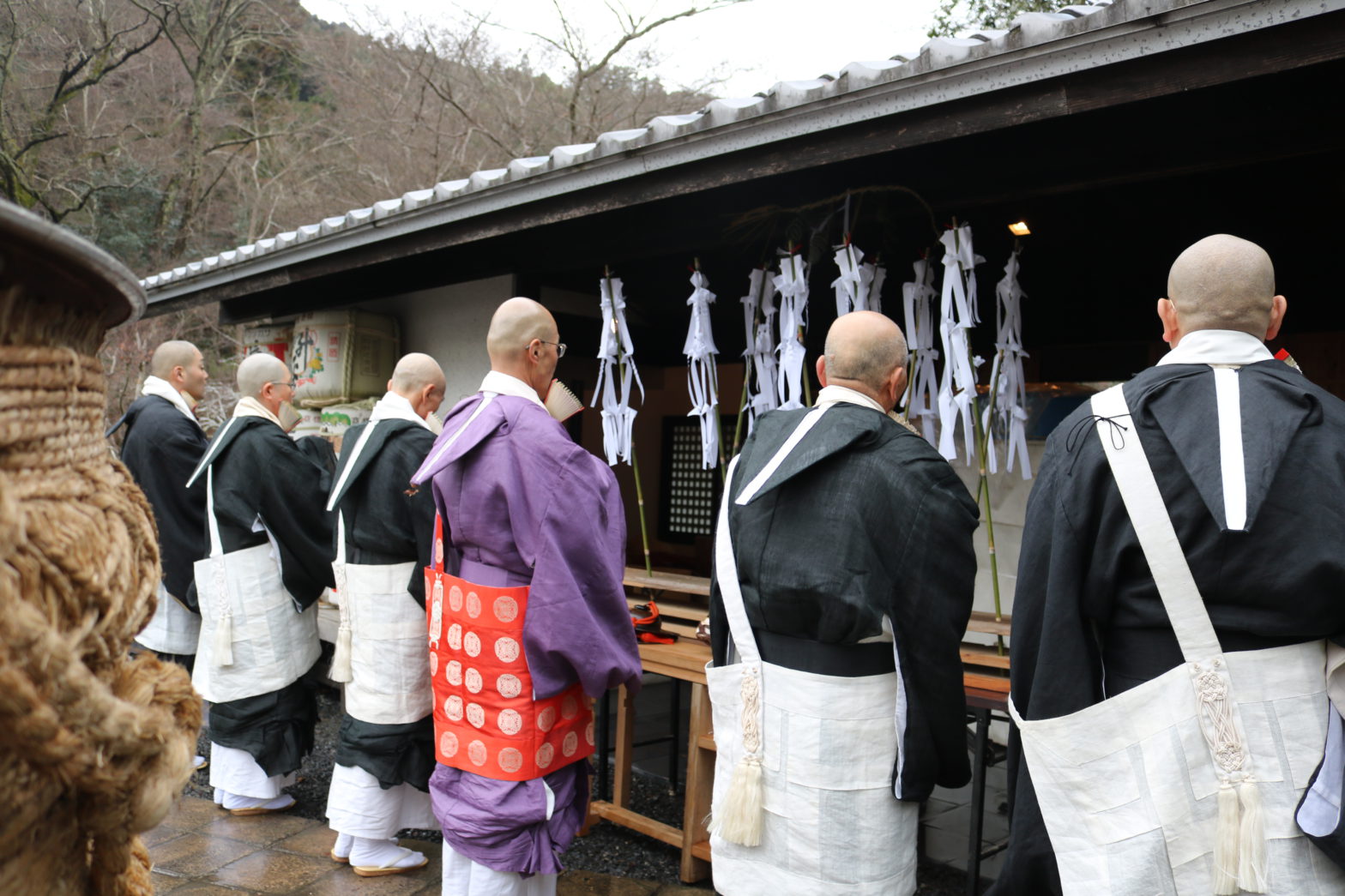In 1996, Nara Industrial Technology Center ⦅now Nara Prefecture Institute of Industrial Development (NPIID) ⦆, Bodaisan Shoryakuji temple, various sake breweries and the librarian of Tenri University in Nara prefecture consolidated a team to examine the first Japanese private brewing technique guide, Goshuno-nikki (“diary of honored sake“) published sometime in the 14th to 16th century.
In 1998, Bodaisan Shoryakuji temple acquired Japan’s first sake production license. (Previously there was no license system around sake production.) The following year the temple managed to revive the Bodai-moto. Since then, every year collaboration of monks of Bodaisan Shoryakuji temple, sake breweries, and NPIID produce Bodai-moto using water and yeast from Bodaisan Shoryakuji temple, and Hinohikari rice (70% polish ratio) grown in Nara prefecture. Using the Bodai-moto as a starter, each sake brewery produces a Junmai category sake reflecting their own characteristics. As of 2021, eight sake breweries produce sake using Bodai-moto and all products are sold at Bodaisan Shoryakuji temple.

Bodai-moto sake generally have acidity and a relatively sweet flavor which brings a deep, rich taste with umami. It can age longer and warmed sake is recommended, but the higher acidity makes it unsuitable for drinking hot. For food paring, oily food like Chinese food or oily tuna (ōtoro) sashimi go well with these kinds of sake.

